It’s the Twoof – most dog owners don’t take of their pet’s dental health but Lily’s Kitchen is trying to make a difference.
How often do you brush your dog’s teeth?
Every day? Once a week? Once a month? When they get a groom? Or never at all?
Whatever your answer, you’re not alone.
Poor dental health affects around 80% of the pet population and can lead to pain and infection that can cause your pet to lose their teeth.
Many owners don’t know the signs to look out for or how to brush or check over their dog’s teeth.
Pet food makers Lily’s Kitchen are on a mission to change this with their Woofbrush and we’re working with them to spread the word.
And we have an exciting competition where we’re giving five owners a Woofbrush pack to help get their gnashers dazzling.
(Scroll to the bottom of this post to find out how you can win)
I’ll be honest. We try to brush Patch’s teeth a few times a week – and this is a much needed reminder that we need to do more.
He’s not keen on the toothbrush – which is a familiar story with many owners.
As it’s Pet Dental Health Month this month the brand is urging more owners to take action, starting with using their Woofbrushes – plaque removing treats your dog will love.
They opened a Doggy Dentist in Notting Hill to show owners how to keep on top of their pet’s dental health.
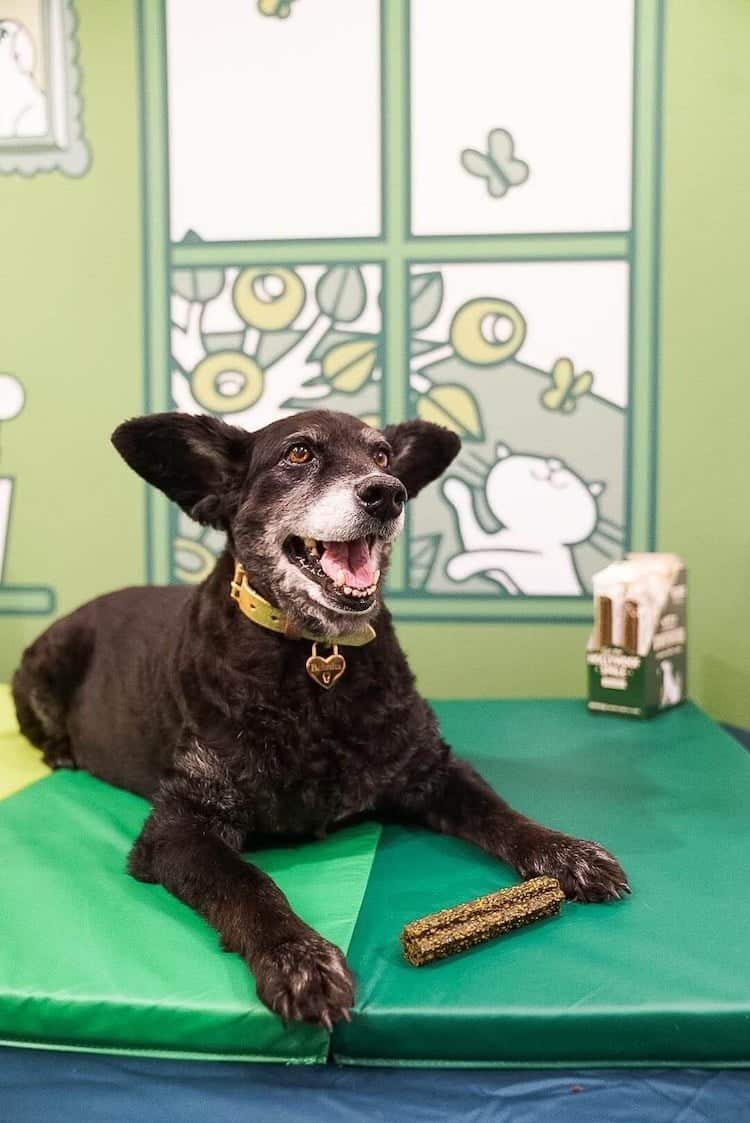
How does the Lily’s Kitchen Woofbrush work?
The mechanical action of chewing can help to physically shift plaque and tartar.
And chewing stimulates the release of saliva, which can help to flush away bacteria and debris which would otherwise end up as plaque.
The Woofbrush doesn’t contain additives or other nasty ingredients, and after chewing it your dog can swallow it.
It’s made of natural products including fennel, green algae, coconut oil and green tea extracts which is kind on tummies.
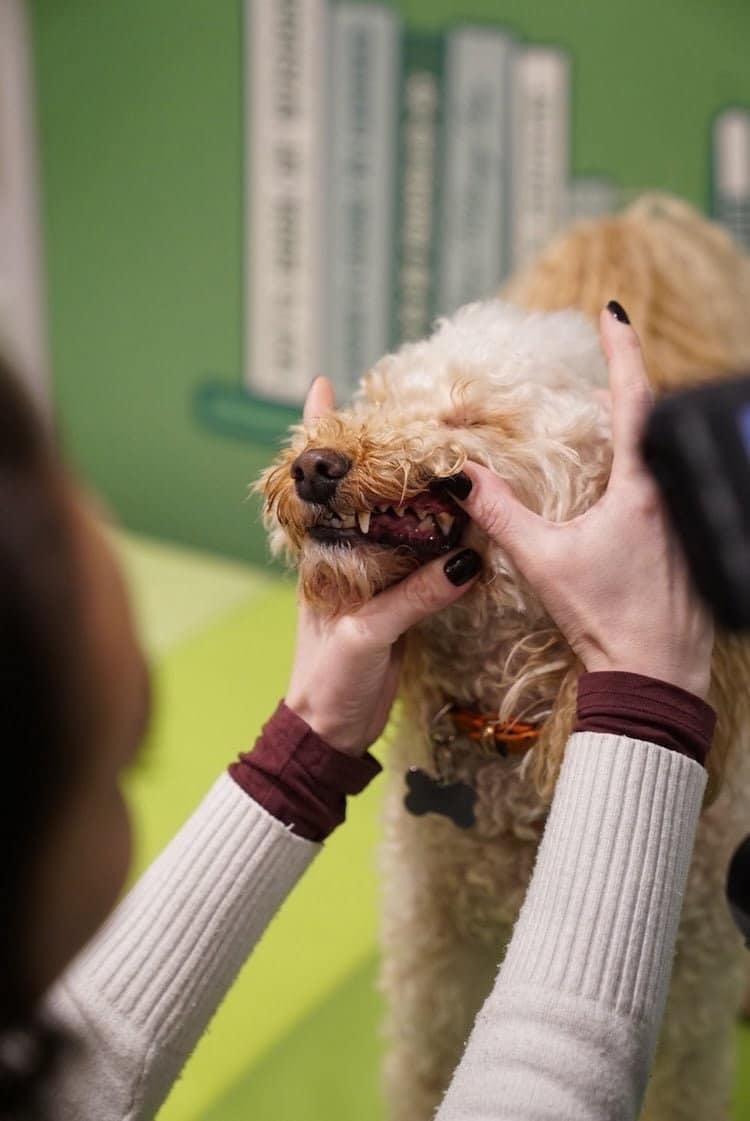
We need to keep on top of their teeth every day
First, we need to make sure their diet is healthy and wholesome but the next big thing is to clean their teeth.
Unless we do this every day, a film of invisibly plaque will build up.
This then turned into tartar, a hard, brown material that we can see.
Tartar causes inflammation of the gums, gingivitis, and periodontal disease, which eventually leads to rotten teeth and tooth loss.
The only way to remove tartar is by going to the vet and having your dog put under general anaesthetic.
This is costly – far more than our scale and polish. So the message is to do your best to brush each day.
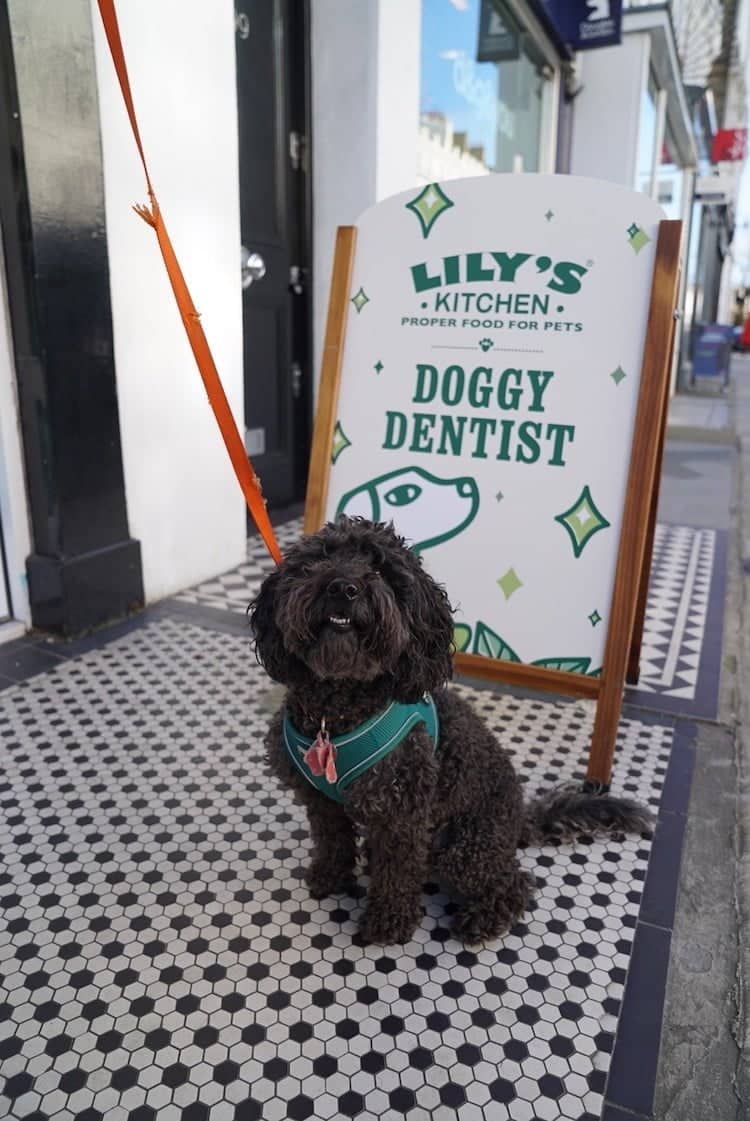
What else can owners do to improve dental health?
Rodney Zasman, a leading London vet says: “It’s a good idea to get into the habit of regularly checking your dog’s mouth when they are calm and relaxed.
“Gently lift up their lip to get a good look at your dog’s teeth and gums. The gums should be a nice healthy pink, their teeth should be fairly white, and their breath not too offensive!
“Accumulations of brown tartar, a red line at the gum margin (gingivitis) and halitosis (bad breath) are all signs that your dog is suffering from dental disease.
“If your dog has severe dental disease they may find it painful when they are eating and their gums may bleed. They might also drop food, drool saliva or rub at their mouths – and they won’t want you to touch their mouths at all.
“Dental disease can also lead to heart and kidney disease when the bacteria travels around the body from the infected gums.
“All these problems are usually a sign that your dog has gingivitis or even periodontal disease (loose and rotten teeth), and a trip to the vet is recommended.”
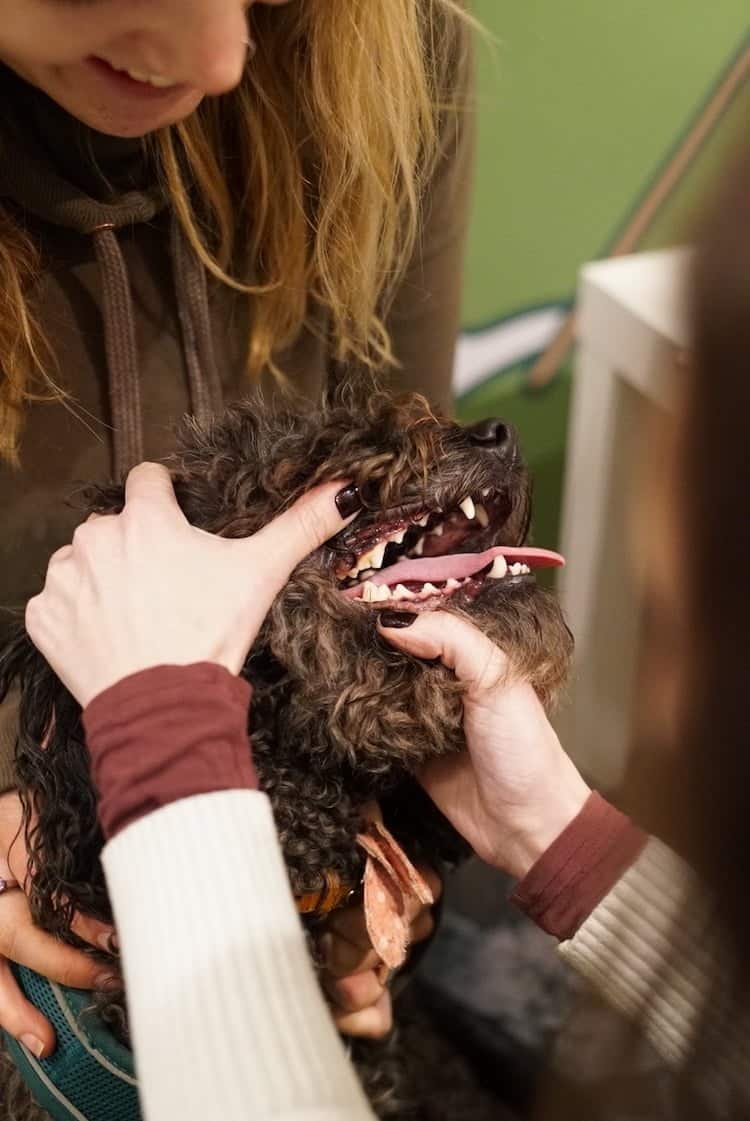
So how do you get started with your doggy’s dental regime?
These are the tips from Lily’s Kitchen.
- Choose a time when your dog is naturally quiet and relaxed, then establish a routine by doing it at the same time each day.
- You can use a toothbrush specially designed for dogs, a rubber finger brush or an electric toothbrush too (if your dog will tolerate the sound). The main thing is that it is soft and appropriately sized for your dog’s mouth.
- Choose a dog toothpaste which is low foaming and free from artificial flavourings and colourings. Many pet toothpastes are enzymatic, which means that they contain enzymes to help break down the food debris that sticks to the teeth and can be swallowed. Most pet toothpastes are also meat flavoured too so that they’re better tolerated by your dog. Don’t use toothpaste for humans – these are designed to be spat out and are not good for your dog.
- To begin with, massage your dog’s gums with your finger to help them get used to the new sensation. Then gradually introduce the toothbrush. Brush gently, stroking from the gums downward.
- Start by brushing for just a minute or two a day and build up. If you make brushing a habit and follow it with a treat or reward, your dog will soon start to become used to it and even enjoy it!
Fancy being in with a chance to win a Lily’s Kitchen Woofbrush pack?
Each Woofbrush pack contains seven chews and they come in small, medium and large so you can choose the one that suits your dog.
Simply send an e mail marked WOOFBRUSH with your name, address, and dog’s name to rachel@thepawpost.co.uk.
Winners will be chosen at random on March 1st.
Find out more about the Woofbrush and Lily’s Kitchen products at www.lilyskitchen.co.uk
If you enjoyed this post, you might like to read:
Nine ways to keep your dog’s teeth clean
How to keep your dog at a healthy weight with Get Pets Fit
Behind the scenes at the Royal Canin Weight Management Clinic

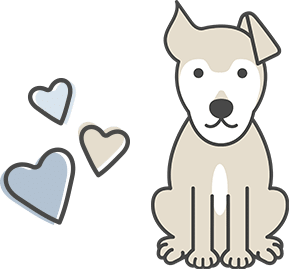
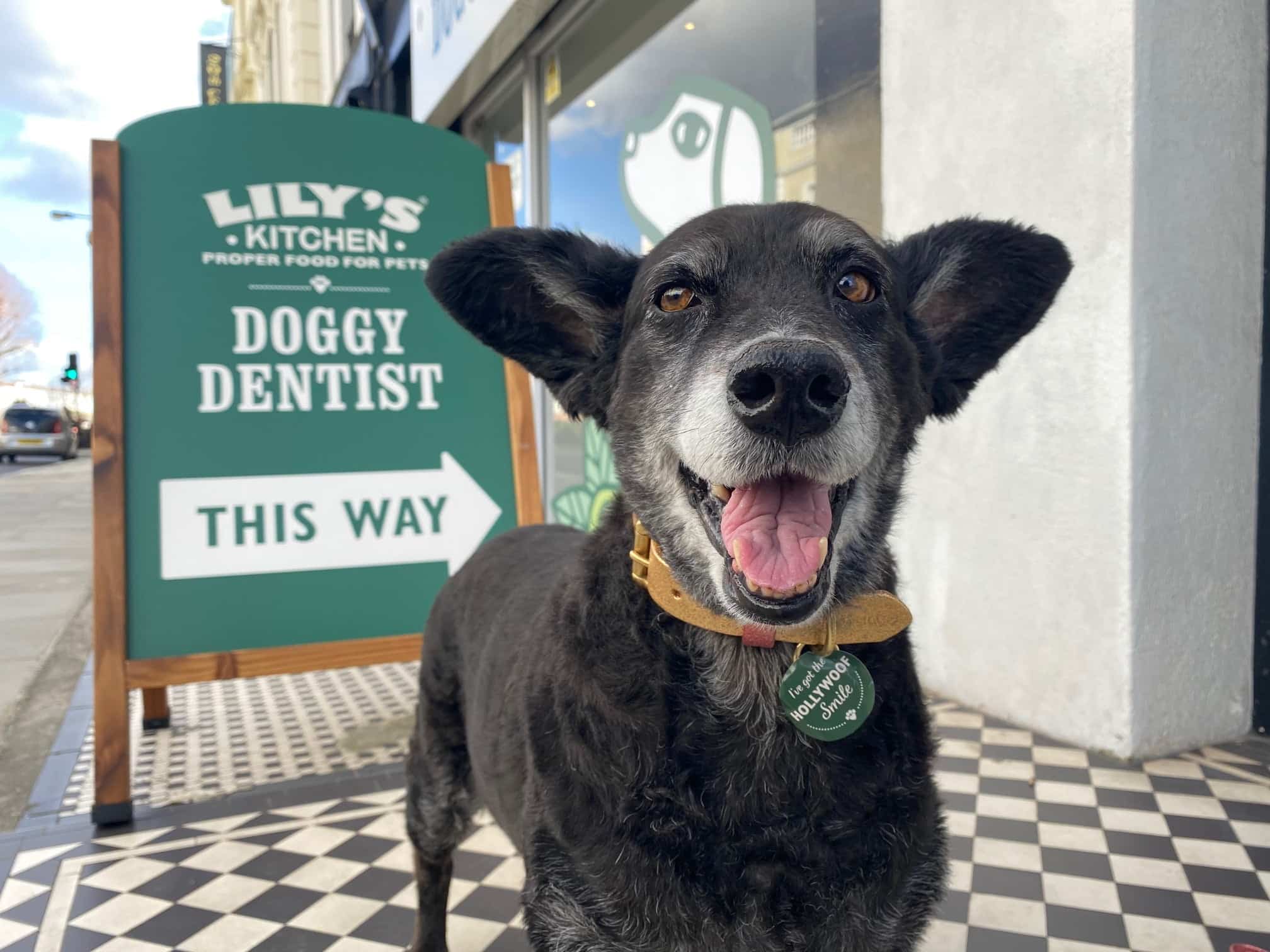


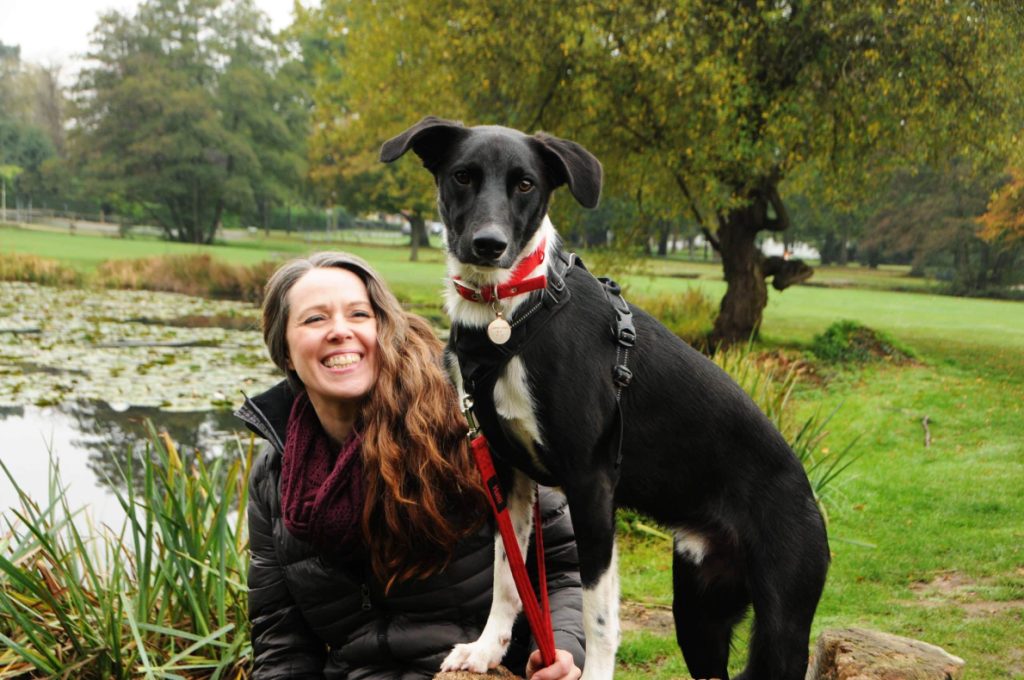
One Response
This article is also so useful and good written. Thanks.